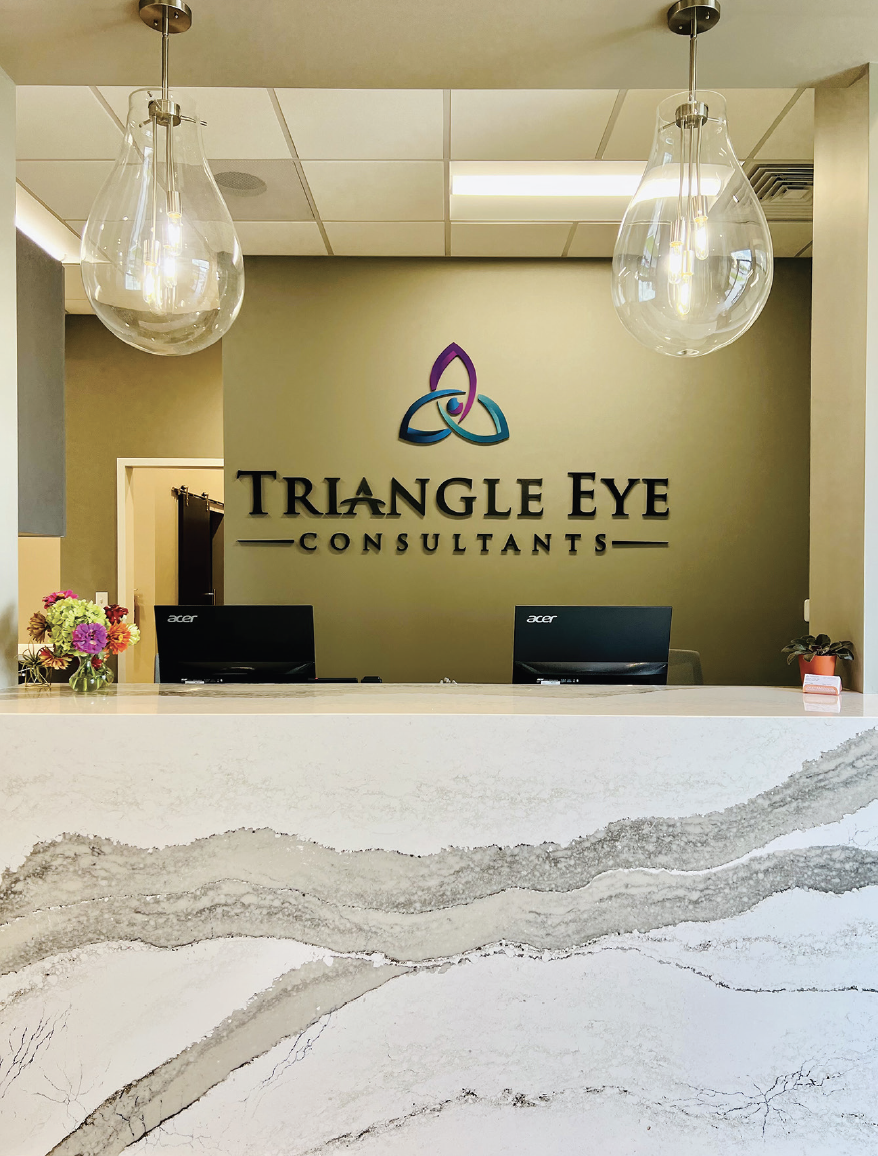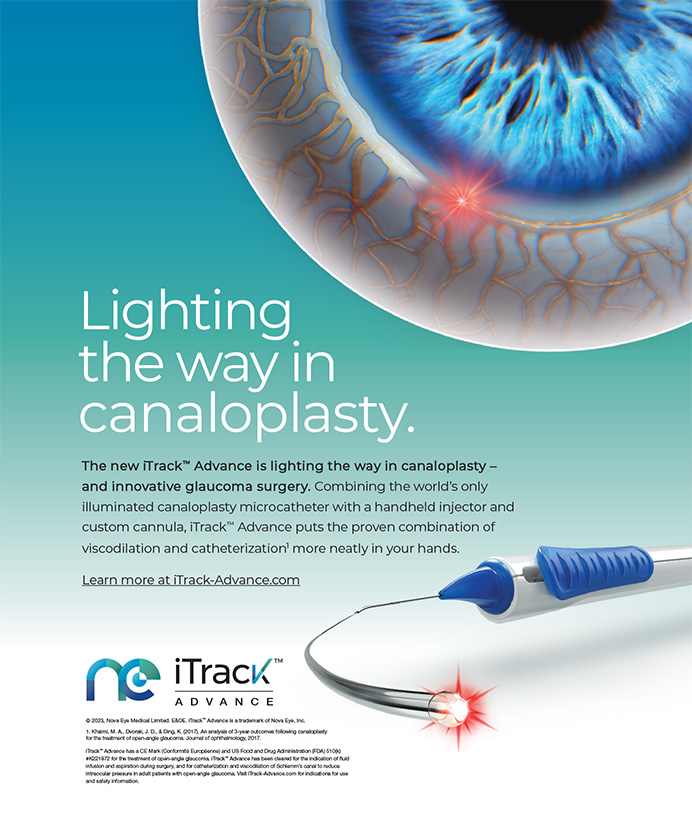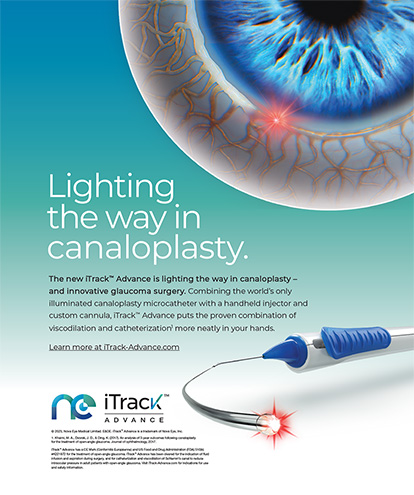
In 2021, I left my position as an associate professor with tenure at Duke University Eye Center to open Triangle Eye Consultants, a small private practice. Apart from a private practice cornea and refractive fellowship with Minnesota Eye Consultants, I spent my first 10 years of practice in an academic setting.
There is no perfect way to gauge whether a change in your practice model or chosen career path is right. Some ophthalmologists may leave their chosen path for financial reasons, others to gain more autonomy or achieve a different balance in life. If you are considering a change, focus on what the change would be and then ask yourself why you want the change and what options are available to help you realize it. For me, the change I wanted was to be in an environment where I had more autonomy and the ability to create a more patient-focused experience and environment in my area of expertise. I knew this path would be more challenging but also that I ultimately would be happier to be able to achieve that dream.
A GLIMPSE INTO PRIVATE PRACTICE
My private practice fellowship was extremely impactful. Minnesota Eye Consultants is an academically oriented practice that is involved in a multitude of clinical trials and stays on the cutting edge of new technology.
I found the practice model provided a nice mix of robust clinical practice and autonomy while being a manageable size. Everyone learns from each other in this setting. I met many of the greatest mentors in my life during my fellowship and consider the practice’s hybrid model to be the ideal private practice environment.
RETHINKING ACADEMICS
I was initially drawn to academics because I love learning, teaching, and of course, clinical medicine. Academics can be an excellent way to pursue both research and clinical interests in a group environment. Much of my research was clinical, and the academic pathway allowed me to develop expertise within a supported, structured, and collaborative environment. There’s something warm and inviting about academics, especially when you are first starting your career. Your colleagues are residents, fellows, and attendings from different subspecialties, and there are a lot of opportunities to grow. These opportunities, however, can change over time. This is what ultimately led me to pursue the hybrid academic/private practice model.
It can be nerve-wracking to make a major change in your professional life. I was certainly going to miss my colleagues, and of course it was natural to be nervous about leaving the environment I’d known for so long and that helped me build my career. I didn’t know if I could succeed on my own. Ultimately, the decision to leave was a leap of faith into the career I wanted after I realized that it wasn’t just the practice environment that made me who I am. I had to push away all my “what if” thoughts so that I could focus on succeeding. It may sound cheesy, but at a certain point, you just have to believe in yourself because if you don’t, who will?
SUCCEEDING IN PRIVATE PRACTICE
Triangle Eye Consultants (Figure) has been open for a little more than 1 year. I attribute a good portion of its success to having faith in myself and my team. Not every moment has been easy, but I am learning as I go and am improving with each challenge. Two of the keys to the success of my practice in its first year are the staff I hired and a healthy desire to understand what I don’t know.

Figure. The front desk at Dr. Gupta’s practice, Triangle Eye Consultants.
Hire smart. The biggest reason for the practice’s success is our staff. Staffing your practice with knowledgeable and experienced employees is extremely helpful. A strong technician is a plus, but in these challenging times, you can also train people along the way to best suit the needs of your practice. (Editor’s note: For more on technicians, see “Where Have All the Good Technicians Gone?,” pg 38.) You need more than clinical staff. You also need those who have a lot of experience in the business because, although the techs know the clinical side, such as how to triage patient questions, the insurance aspect is also essential. A strong, experienced front desk staff member who understands how to manage the insurance side of things is invaluable. The biggest and rudest awakening for me was the nuances of dealing with insurance companies—it is a huge time commitment to get on the various plans and then navigate the loopholes and hurdles required to stay in compliance year after year.
The people with whom you surround yourself are what make the day-to-day running of a practice meaningful. We often spend as much time at work as we do at home with our families, so I think it is important to create a team and workplace culture that is centered around the same mission to achieve the same goals. This fortifies the team and, therefore, the practice.
Lean on the expertise of others. You can pick up on how to run a practice by simply paying attention to friends and colleagues. One of the most important things I learned in my 10 years at Duke was how much I didn’t know about running a business. I had a basic understanding, but I had to lean on the expertise of others in areas I am less familiar with. I filled in the gaps by outsourcing to experts. There are so many tools and resources available today—billing companies, credentialing specialists, space designers, virtual technicians and more. (Editor’s note: For more practice management tools and resources, see “How to Run a Successful Practice in the Era of Staff Shortages.”)
MEASURING SUCCESS
Many ophthalmologists are overachievers, and we all have friends and colleagues who are running amazing practices. I found it important to resist the temptation to compare myself to others. I had to create my own identity and version of success with my practice.
Setting reasonable goals by which to measure success helped me keep things in perspective during the first few months. These goals were often small and readily achievable, such as seeing 10 patients a day or having a happy staff 6 weeks in. Each goal met was a motivation for the next. Now, with the opening of our clinic and laser center measuring 5,000+ square feet, it seems hard to remember how small we started. Patience with slow and controlled growth has paid off.
BEST OF BOTH WORLDS
I continue to be involved in academics and participate in various clinical trials, perhaps more so in my new environment. I feel in some ways I am one step closer to emulating some of my core mentors from Minnesota Eye Consultants. Private practice has afforded me the utmost autonomy and responsibility as a physician. Not only can I practice clinical medicine at the highest level, but I can also mold the practice to my exact vision, which is to have the patient experience and highest quality of care at the center of our day-to-day decisions.




